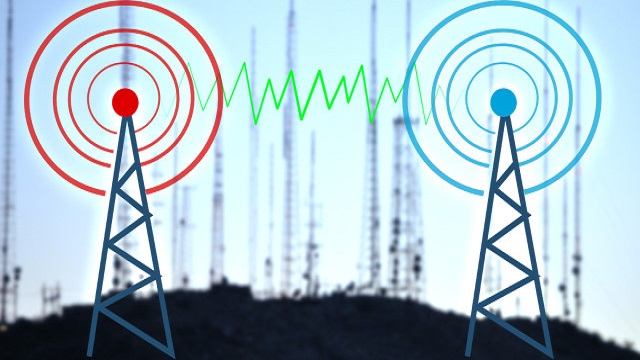Using public Wi-Fi requires a lot of patience. Different devices have to share the bandwidth from a router, and that can slow downloads to a crawl. Now, a research group in the Netherlands is proposing to increase wireless capacity by orders of magnitude by using infrared light instead of radio waves.
The proposed system uses infrared antennas to steer light beams toward connected devices, and reaches a bitrate of 112 gigabits per second (Gb/s). Standard Wi-Fi routers, by contrast, provide only tens or hundreds of megabits per second, roughly a thousand times smaller. And while multiple devices have to share a Wi-Fi router’s bandwidth, every device using the infrared system gets its own dedicated 112-Gb/s connection.
“Wi-Fi’s getting congested everywhere,” says Ton Koonen, a professor of electrical engineering and chair of the Telecommunications and Broadband Networks group at the Technical University of Eindhoven. He presented his work at the European Conference on Optical Communications in Gothenburg, Sweden, last week.
In his setup, data is carried on a beam from an infrared laser—the same sort used in telecommunications networks—to an array of optical fibers. Just as in telecommunications, the initial beam can be split into multiple channels, each at a slightly different wavelength. The fibers shine their beams, which have wavelengths between 1529.10 and 1569.80 nanometers, onto a pair of arrayed waveguide gratings. The gratings act like a filter, directing each beam in a particular direction based on its wavelength. A lens focuses the beams, coming out of a router on the ceiling of the room, into individual spots.
Where those spots land is where the tablet or smartphone ought to be. Those devices would be equipped with an infrared receiver, consisting of a wide-aperture lens with a wide viewing angle, and photodiodes to convert the optical signal to an electrical one. If the person using the tablet is walking around the room and wanders out of view of one antenna, the system switches to another antenna. The location of the device can be tracked using its Wi-Fi radio.
In theory, Koonen says, data from the device could be sent back optically as well, but that’s a trickier system to design, so at first uploads would be sent via Wi-Fi. That shouldn’t be a problem, he explains, because uploads generally use less data than downloads. Plus, with a lot of the traffic shifted to the infrared system, the Wi-Fi spectrum should be a lot less crowded.
Other groups are working on replacing Wi-Fi with light-based communications. A consortium of groups led by the University of Strathclyde, in Glasgow, developed a system based on the light from LEDs used in room lighting, dubbed Li-Fi. Researchers on the project said their system could reach 10 Gb/s, although using lasers instead would boost it to 100 Gb/s.
But unlike his system, Koonen says, devices using Li-Fi would have to share the total bandwidth. “A major point in that system is you use illuminating LEDs, which are used for lighting, not for communications purposes,” he says. That means they’re being put to a use they’re not designed and optimized for. His system, by contrast, using existing telecom components.
If industry wants to spend money to engineer his system, Koonen says, it might be commercially available within five years.
Source: IEEE Spectrum






